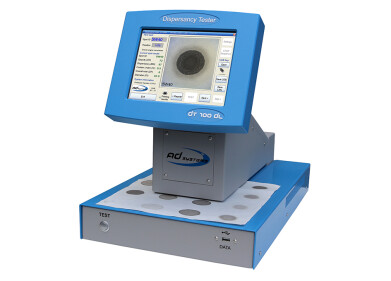Oil analysis
Determining Methanol in Crude Oil and Biodiesel Using Static Headspace GC-VUV
Oct 15 2019
Methanol can be found in crude oil and biodiesel, although for different reasons. During the drilling and transportation process, methanol is used in crude oil to prevent the formation of gas hydrates. To produce biodiesel, methanol is a reagent for transesterification of animal fats, vegetable oils or recycled greases, producing fatty acid methyl esters (FAMEs). Unfortunately, residual methanol in either crude oil or biodiesel can lead to costly problems such as impacting refinery water treatment facilities or failing regulatory limits before fuel blending can occur.
Methods such as ASTM D7059 and EN 14110 are used to monitor methanol levels in crude oil and biodiesel, respectively. Traditional methods like ASTM D7059 involve direct injection of crude oil into a gas chromatograph, requiring backflush capability to properly analyze methanol with a flame ionization detector (FID), which can be problematic. On the other hand, EN 14110 uses static headspace GC-FID to determine methanol content in biodiesel.
ASTM D7059 and EN 14110 require quantification limits of methanol to be between 5-1,000 ppm and 0.01%-0.50% (m/m), respectively. Using static headspace GC-VUV (vacuum ultraviolet spectroscopy), methanol is found to be baseline resolved in biodiesel and crude oil (Figure 1). Notably, biodiesel has significantly fewer volatile compounds present than crude oil matrix. Figure 2 shows methanol’s absorbance spectrum, which is uniquely distinct for any other compounds present in biodiesel or crude oil. Furthermore, calibration curves are generated over the quantification limits presented in ASTM D7059 and EN 14110 and shown in Figure 3. GC-VUV can meet these specifications with detection limits of 1 ppm for methanol in crude oil and 0.005% methanol in biodiesel.
Instead of using two different sampling techniques, static headspace GC-VUV is used to determine methanol in crude oil and biodiesel. This technique simplifies the GC configuration and saves the GC inlet and column from crude oil/biodiesel contamination, while also providing spectral identification and quantification of methanol in both matrices. Static headspace GC-VUV could be a feasible alternative to traditional methods such as ASTM D7059 and EN 14110 that analyse methanol in fuel matrices. To learn more about GC-VUV and the VUV Analyzer™ Platform for Fuels click here.
By: James Diekmann, Applications Scientist & Lab Manager, VUV Analytics
Digital Edition
PIN 26.1 Feb/Mar 2025
March 2025
Analytical Instrumentation - Elemental Analysis for Quality and Process Control at Refineries, for Lubricants and Wear Metals in Engine Oils - Synthetic Lubricants: New Developments - Scaling...
View all digital editions
Events
Apr 08 2025 Birmingham, UK
Apr 08 2025 Kielce, Poland
Apr 08 2025 Ravenna, Italy
Apr 08 2025 Southampton, UK
Apr 08 2025 London, UK






.jpg)

















